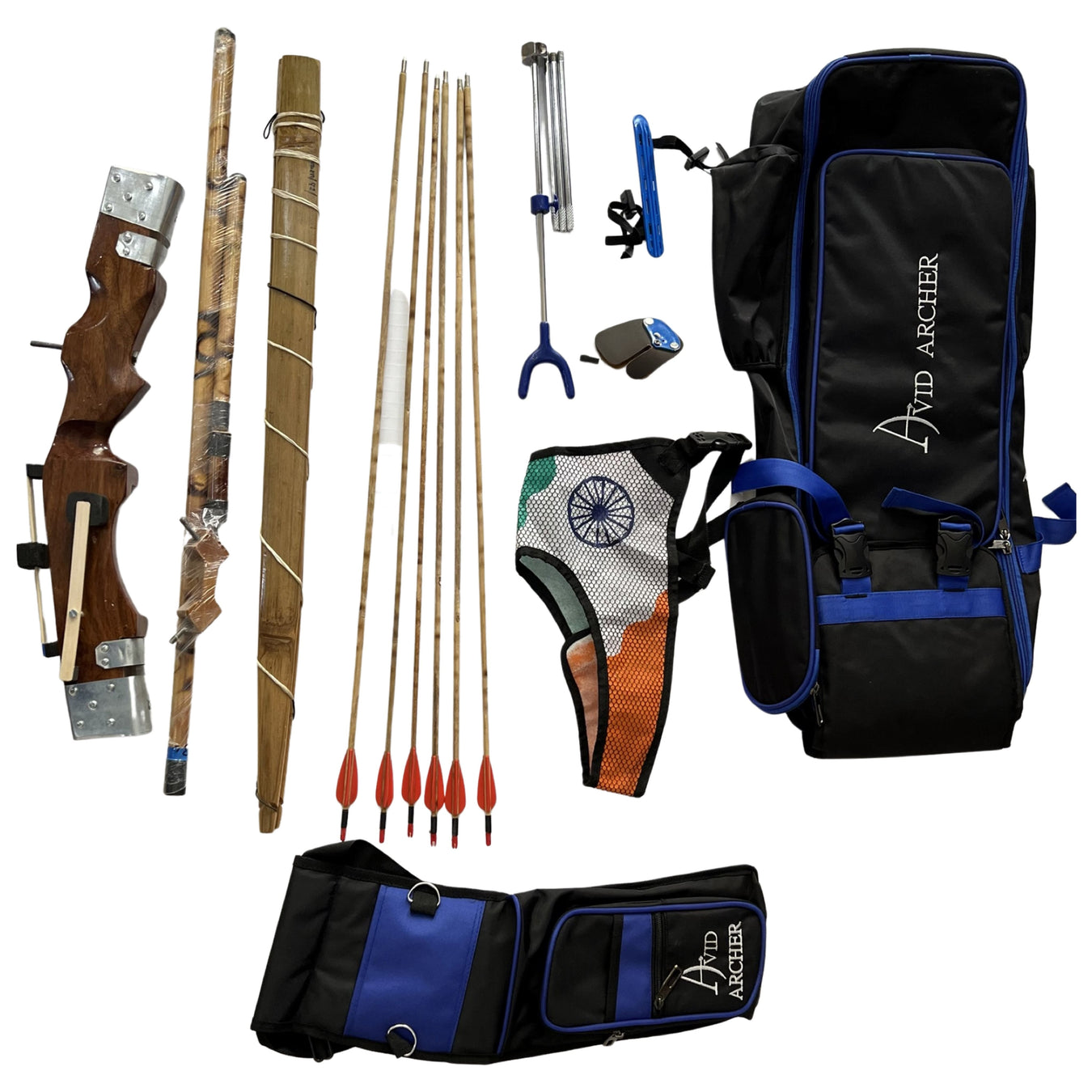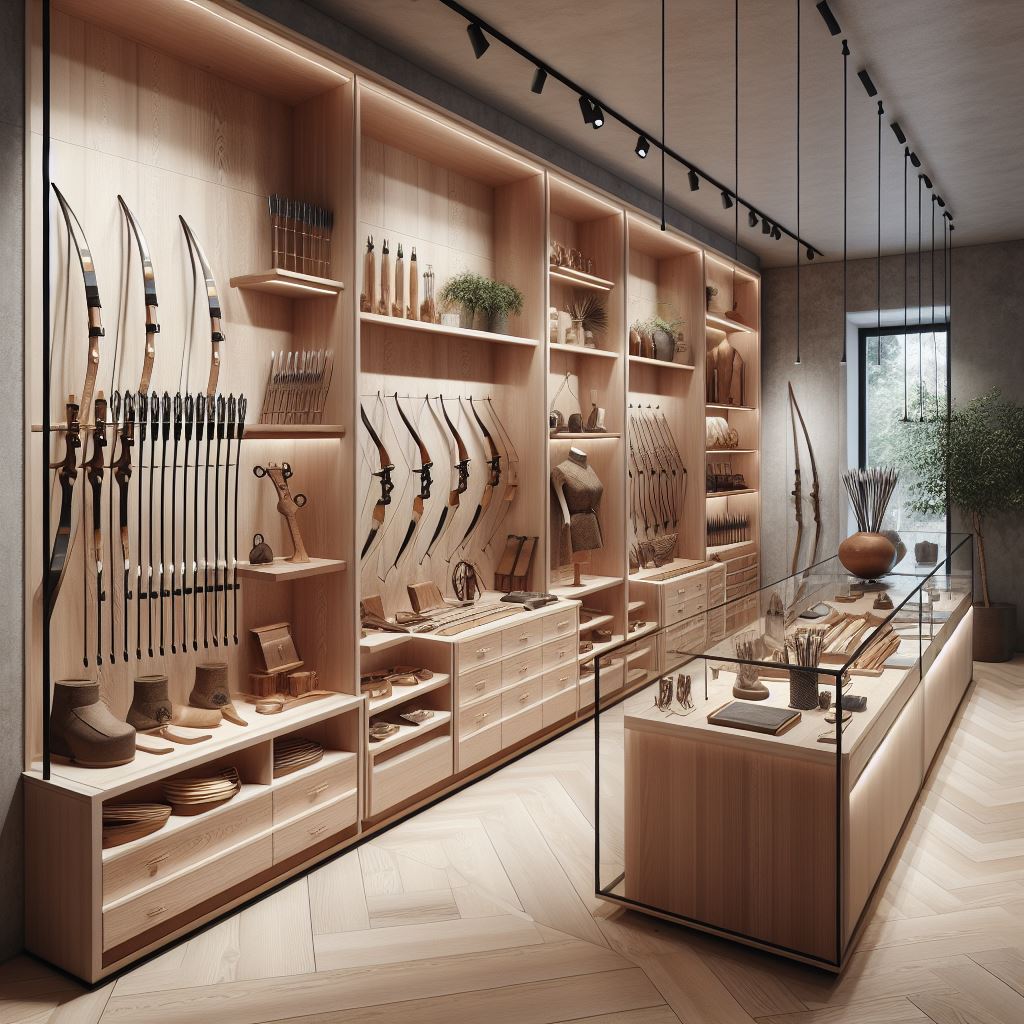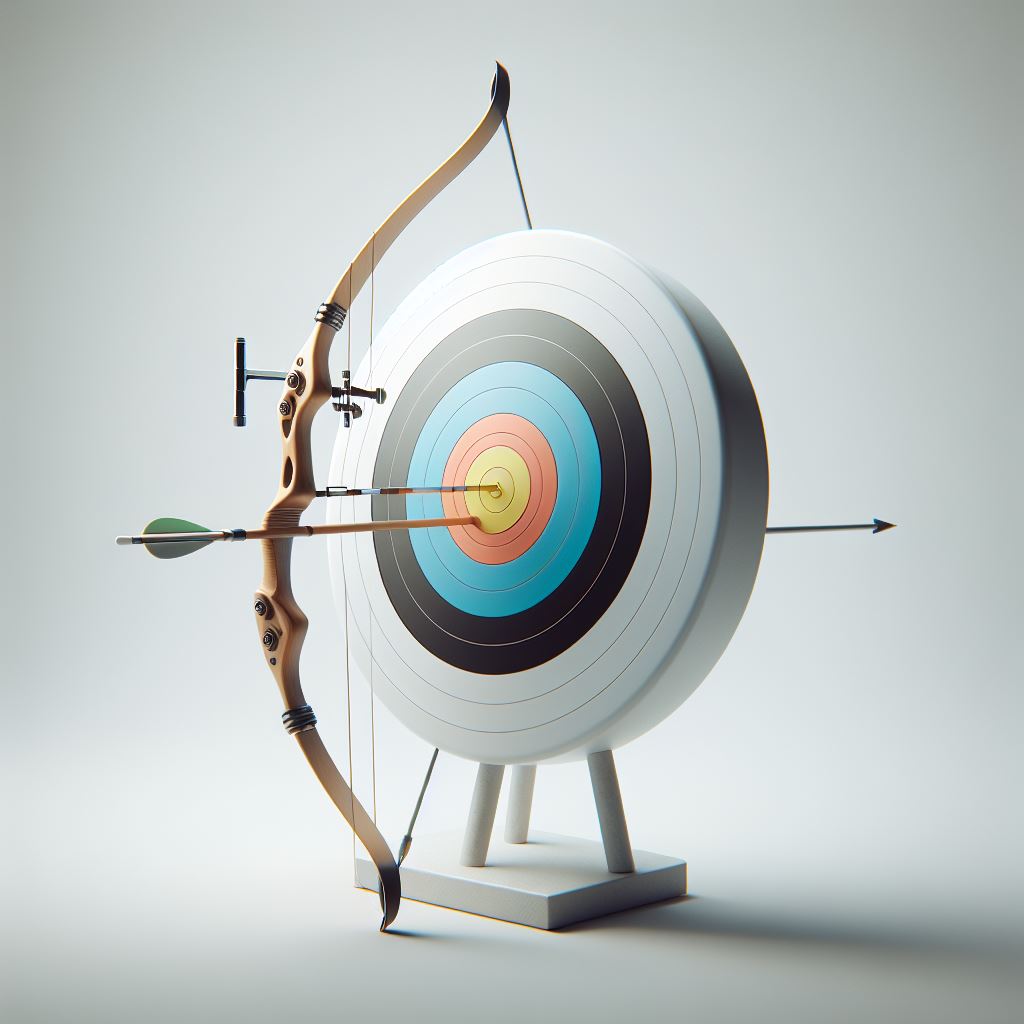
Archery Bows
Huge collection of wooden bows, recurve bows, compound bows of all popular brands at best price

Bow and arrow ensemble comprises a flexible stave fashioned from wood or other elastic materials, curved and maintained in tension by a string. The arrow, a slender wooden shaft featuring a feathered tail, is affixed to the string via a notch at the shaft's end. It is drawn back until sufficient tension accumulates in the bow, allowing the released arrow to be propelled forward. Historically, arrowheads have been crafted from shaped flint, stone, metal, and other durable materials.
The origins of the bow and arrow trace back thousands of years, with evidence suggesting their use by various ancient civilizations. The earliest archaeological findings indicate that bows and arrows were integral to the hunting and warfare practices of early humans.
In prehistoric times, these weapons were likely developed independently in different regions across the globe. Ancient Egyptians, for example, depicted the use of bows and arrows in their artwork as far back as the Predynastic period (c. 6000–3150 BCE). Similarly, archaeological sites in Africa, Europe, and Asia have revealed remnants of early bows and arrows, showcasing the widespread adoption of this technology.
The bow and arrow played a pivotal role in the rise of advanced societies. Their use revolutionized hunting techniques, allowing for more efficient and safer means of obtaining food. Additionally, these weapons became crucial in warfare, providing warriors with a significant advantage in terms of range and accuracy.
As societies advanced, so did the design and craftsmanship of bows and arrows. Different cultures developed unique styles and materials for their bows, reflecting the geographical and cultural diversity of human civilization. From the composite bows of the Mongols to the longbows of medieval Europe, each design embodied the technological and cultural advancements of its respective era.
The bow and arrow's evolution not only shaped the course of military history but also influenced cultural practices, mythology, and art. Over time, these iconic weapons transcended their practical applications to become symbols of skill, precision, and cultural identity across the globe.
In India, the use of bows and arrows has a rich and ancient history deeply intertwined with the country's diverse cultures and civilizations. The bow and arrow were integral tools for hunting, warfare, and cultural practices across different regions and periods.
Historical texts and archaeological evidence indicate that bows and arrows were extensively used in ancient India. The Mahabharata and Ramayana, two epic Hindu texts dating back to antiquity, include references to skilled archers and elaborate descriptions of bowmanship. Legendary figures such as Arjuna from the Mahabharata were renowned for their exceptional archery skills, and their tales have had a profound influence on Indian cultural narratives.
Archaeological discoveries provide insights into the material culture of ancient India, revealing the existence of various types of bows and arrowheads. These artifacts suggest that archery played a significant role in both hunting and warfare. Additionally, depictions on ancient sculptures and reliefs showcase the use of bows and arrows in religious and mythological contexts.
One of the most iconic examples of traditional Indian archery is the longbow known as the "Dhanush." This powerful and recurved bow has historical significance and cultural symbolism. Various regions in India developed their distinct styles of bows, reflecting the diverse geography and cultural practices.
In addition to their practical applications, bows and arrows became integral elements of traditional Indian martial arts. Archery was not only a means of warfare but also a disciplined skill that was cultivated for sport and personal development. Even today, traditional archery festivals and competitions are held in different parts of the country, keeping alive the cultural heritage of archery in India.
Overall, the bow and arrow in India embody a rich legacy, blending practical utility with cultural symbolism and historical significance. From ancient epics to contemporary sporting events, the enduring influence of archery continues to resonate throughout the diverse tapestry of Indian heritage.
The bow, an enduring and versatile tool, holds a significant place in India's cultural history. Crafted from materials like bamboo, wood, and horn, traditional Indian bows, exemplified by the recurved "Dhanush," display advanced craftsmanship and regional variations. Celebrated in ancient texts like the Mahabharata and Ramayana, the bow has been revered for its role in warfare and symbolizes discipline in traditional martial arts. Today, it remains a cultural icon, serving not only as a practical instrument for hunting and sport but also as a testament to India's diverse heritage and the enduring legacy of archery. In modern times, innovations like recurve bows and compound bows have further expanded the possibilities of archery, blending tradition with contemporary technology to meet the evolving needs of enthusiasts and athletes.
The bowstring, a vital element in archery, connects the tips of the bow and is integral to its functionality. Crafted from materials such as natural fibers or modern blends like Dacron, the bowstring imparts tension when drawn, influencing arrow speed and accuracy. In both traditional Indian bows and contemporary archery, the bowstring is a crucial component, requiring precision in its construction for proper tension and balance. Advances in string materials contribute to increased durability and performance, catering to the diverse needs of archers in traditional and modern contexts. The bowstring remains a fundamental link between archer and bow, embodying the essence of tension and release central to the art of archery.
Arrows, the indispensable projectiles in archery, boast a rich history woven into the fabric of human civilization. Crafted with a thin, elongated shaft, wooden arrows have been traditional staples, while modern innovations have introduced materials such as carbon for enhanced performance. Adorned with a feathered tail for stabilization during flight, arrows are fitted with arrowheads made from various materials like shaped flint, stone, metal, or advanced alloys. These arrowheads not only determine the arrow's intended use, whether for hunting, warfare, or sport, but also symbolize the evolution of archery technology. In the context of traditional Indian archery, arrows exhibit regional variations, showcasing the diverse cultural practices across the subcontinent. Nocking a wooden arrow or carbon arrow onto the bowstring, drawing it back, and releasing it with precision encapsulate the timeless artistry and skill inherent in archery, making the arrow not just a practical tool but also a symbol of cultural heritage and technological progress.

Huge collection of wooden bows, recurve bows, compound bows of all popular brands at best price

Archery arrows at best price, great selection of wooden arrows, carbon arrows for recurve and compound bow

Best collection of bow bags, Indian Round Bow Bag, Recurve Bow Bag, Compound Bow Bag

Archery set for beginners, Indian archery set, recurve archery set, takedown bow set, compound bow set

Large collection of archery accessories having all gears of popular brands

Custom handmade full length 6 arrows with rubber fletches. Unmatched quality and have very good performance and highly rated my many Indian archers...
View full detailsAre you planning to experience archery? If yes, then this kit is specifically designed for beginners who want to experience the game of archery. It...
View full detailsPractice is important for all the games and archery is no different. Archers need to practice everyday to excel. Sometimes you just can't practice ...
View full details122x122cm, Target face for archery shooting, FREE four face pins Ideal for match and daily practice Outdoor shooting face Standard target face fo...
View full detailsWhen you play archery, then bow string can hurt your arm when string is released to hit arrow on target. Arm guard protects your arm from the bow s...
View full details
Are you planning to experience archery? If yes, then this kit is specifically designed for beginners who want to experience the game of archery. It's cost effective and includes all the equipment which are required to play the game. Kit contains following:
It is the best choice for all age and gender, products are well tested and made of premium quality dense hard timber riser and seasoned hardened bamboo which is used for the limbs
Archer can shoot longer without much fatigue. Playing with takedown bow is so much fun and very relaxing, the options for multiple limb weights offers flexibility, arrows fly from it just as fast as a professional recurve bow and fly's off very smoothly. It shoots very consistently and is very quiet without anything extra on it.
Easy to take down and assemble. Very solid when assembled, very small when collapsed, fits in its backpack easily. Using a stringer tool is the safest way to properly set up or take apart the bow.
AVALON Recurve Bow Stringer The AVALON Recurve Bow Stringer is an essential tool for every archer who owns a recurve bow. Designed by the renowned ...
View full detailsPractice is important for all the games and archery is no different. Archers need to practice everyday to excel. Sometimes you just can't practice ...
View full detailsA bowstring joins the two ends of the bow and launches the arrow. Bowstring can have a profound impact on many aspects including accuracy, bow perf...
View full detailsSanlida Noble Standard Beginner & Intermediate Recurve Bow Kit The Sanlida Noble Standard Beginner & Intermediate Recurve Bow Kit is the pe...
View full detailsThe new Hoyt Stratos raises the industry benchmark to match today’s demands of the world’s best archers. The Stratos features the all-new, extremel...
View full detailsThe new Hoyt Stratos raises the industry benchmark to match today’s demands of the world’s best archers. The Stratos features the all-new, extremel...
View full detailsThe new Hoyt Stratos raises the industry benchmark to match today’s demands of the world’s best archers. The Stratos features the all-new, extremel...
View full detailsThe new Hoyt Stratos raises the industry benchmark to match today’s demands of the world’s best archers. The Stratos features the all-new, extremel...
View full detailsHOYT PODIUM X ELITE COMPOUND BOW The Hoyt Podium X Elite Compound Bow is designed for archers who demand precision and performance. Whether you're ...
View full detailsTakedown bow is best suited for beginners and a good way to start the game of archery. Archer can play with it up to 50 meters easily. Best quali...
View full detailsSpecifications:Probably the lightest metal riser for beginners on the market currently!With only 699g it is unbelievably light, fits quite well in ...
View full detailsSpecifications:Core Pulse are entry level laminated wood recurve limbs. Available in many different sizes and a wide range of poundages to suit arc...
View full detailsSpecifications: Core Hit Black limbsWooden recurve limbs.Bow Lengths: 54in, 58in, 62in, 66in, 68in, 70inDraw Weights: 10lbs to 44lbs in ...
View full detailsSpecifications:The Air by Core Archery is a 25 inch length lightweight magnesium alloy riser which allows the fitting of ILF (International Limb Fi...
View full detailsIntroducing our premium archery bow bag – the ultimate companion for your gear. Crafted with durable, premium material, this bag ensures optimal pr...
View full detailsIntroducing our premium archery bow bag – the ultimate companion for your gear. Crafted with durable, premium material, this bag ensures optimal pr...
View full detailsIntroducing our premium archery bow bag – the ultimate companion for your gear. Crafted with durable, premium material, this bag ensures optimal pr...
View full details
Leave a comment